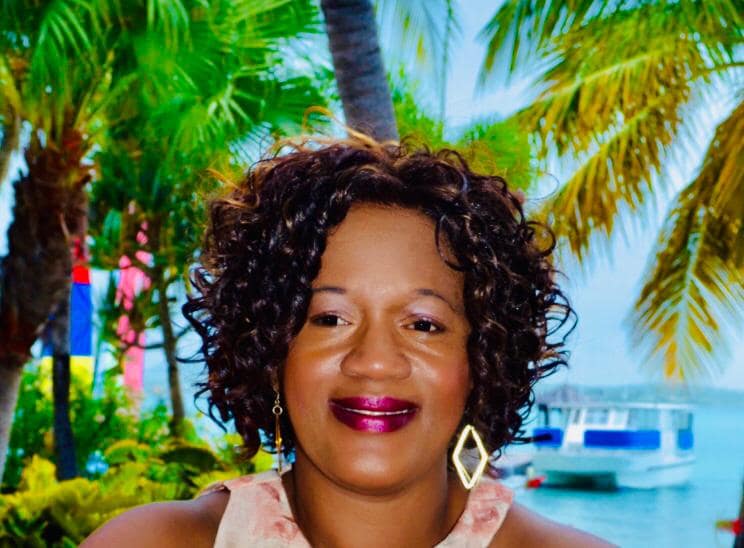
by Derede Whitlock
Cultural heritage tourism involves visiting places that are significant to the past or present cultural identity of a particular group of people. In Antigua and Barbuda’s largest source market, New York City, the vibrant and complex melting pot of cultural heritages sets it apart from any other destination.
At the heart of New York’s history is its Caribbean culture. Of the 4 million Caribbean descendants throughout the USA, the vast majority live in NYC, home to the West Indian Day Parade, the largest parade in the USA. June is National Caribbean American Heritage Month, and the people and the region are being celebrated with proclamations, flag raising ceremonies and cultural activities.
In the midst of the global pandemic when movement is restricted, The Antigua and Barbuda Associations United (ABAU) is using modern communication technology to connect nationals at home and in the Diaspora to celebrate our culture. An on-line Tribute to Sir King Swallow on June 25, under the theme “Zoom and Soca” will honor this Caribbean icon who dominated the local calypso scene, as well as the West Indian Day Parade on Eastern Parkway for several decades. He will receive the ABAU Legacy Award for “Taking Our Culture Beyond Borders.”
A visit to NYC, or any of Antigua and Barbuda’s major source markets, will affirm a strong affinity for Caribbean culture and traditions, just waiting to be harnessed. Over the years we have exported our culture through products like English Harbour Rum and Susie’s Hot Sauce, events such as Carnival and Cricket and our music, which is featured on virtually every Caribbean playlist. However, we must develop a blueprint that will allow us to satiate this “culture-lust” for all things Caribbean, to attract new types of visitors to our shores.
Exposure to other cultures and communities can satisfy the human need for diversity, giving rise to new knowledge, and encounters that increase intercultural understanding and tolerance. At this critical time of widespread unrest in the US, there are calls for cultural diversity. We must use this opportunity to find an effective way to recast our unique story, beyond our food and rum, beautiful beaches and amazing resorts to highlight the strength and courage of Caribbean people. Those in search of cultural connections in low density communities, are likely to become of our best prospects in the COVID recovery.
It is often said that “life must be lived forward, but it can only be understood by looking backwards.” This is evidenced by the rich history of Caribbean Americans’ journey to the United States and their significant contributions to the success, spirit, and character of life in America. Emigration from the Caribbean region to the US started in 17th, 18th, and 19th centuries, when a significant number of slaves were brought to the United States. Antiguan and Barbudan free slaves began to arrive around 1840 and like many other Caribbean islands, they brought their customs that have added to the diversity of the United States.
For more than a century, Brooklyn has been home to one of the largest, most diverse populations of Caribbean immigrants in the world and in recent years, there has been a greater focus on harnessing Caribbean culture. In September of 2017, the vibrant Caribbean community in Brooklyn was introduced as an official cultural hub known as LITTLE CARIBBEAN. This designation has stimulated the promotion and development of food, culture, and small businesses in the Brooklyn neighborhoods of Flatbush, East Flatbush, and Prospect Lefferts Gardens. http://littlecaribbean.nyc/faq.php
The Harlem Renaissance was another important marker on the journey of Caribbean Americans. This period was characterized by racial pride and a refusal to quietly submit to the practices and laws of segregation. Caribbean Americans also played an active role in the civil rights movement. In fact the West Indian Day Parade which actually started in Harlem in 1947, emerged from this movement, where the creation of music, art and literature “challenged and uplifted” the people.
Many religious institutions were built by Caribbean nationals who were denied entry into white Episcopal churches. As a result, they formed their own Black Episcopalian and Methodist churches. They also developed non-religious institutions that provided financial and social assistance to “newcomers” or recent immigrants. Membership was based on the immigrant’s country of origin. Some of these groups include the Bermuda Benevolent Association (founded 1897), the Sons and Daughters of Barbados and the Antigua and Barbuda Progressive Society (ABPS) which was characterized as the “Lighthouse in Harlem.“
Although the Bronx is the borough with the highest concentration of Antiguan and Barbudan nationals, it is in Harlem where our country has made its strongest cultural statement with the establishment of “Antigua House,” headquarters of the ABPS. In 2013, Antigua and Barbuda’s immigrant story was highlighted in an exhibit at the Schomburg Center for Research in Black Culture. Founded in 1934, ABPS is the longest surviving Antiguan and Barbudan institution, pre-dating the Antigua Trade and Labour Union. The “Lighthouse in New York” display of historic records, offered a rare glimpse into the lives, activities, struggles and pursuits of early Antiguan and Barbudan immigrants in New York City.
Similar to the hardships of the economic crisis that we currently face, minorities were also disproportionately affected by the Great Depression. The ABPS emerged as one of many immigrant community groups that provided assistance to the wageless, to help alleviate the economic hardships facing the community.
The ABPS story speaks to the strength of our community and how “from a small seed a mighty trunk may grow.” Some 85 years later, there are more than 25 Antiguan and Barbudan community groups throughout the US, organized under the umbrella of the Antigua and Barbuda Associations United (ABAU).
Against the backdrop of widespread unrest in the US, cultural heritage tourism provides an avenue to build greater understanding, and forge stronger connections — social impacts that we sorely need in today’s increasingly divisive world. The Betty’s Hope Restoration Project, Shirley Heights, Nelson’s Dockyard, Wallings Dam Reserve and our many forts are all cultural heritage sites that can be leveraged to diversify our tourism product. These national historical sites showcase our heritage and accomplishments, both at home and abroad. As we rebuild our tourism industry in a highly competitive marketplace, we must explore novel opportunities to repackage our tourism product, by infusing historical and cultural elements such as sailing, fishing, farming and crafting that underscore our local customs.
Here are some ideas for repackaging our product that I have been considering over the years.
5 Cultural Ideas to Boost our Tourism Product
- Make our Carnival a year-round experience. A ‘Mas Museum or Hall of Fame should be established to showcase winning costumes. It should also provide interactive experiences so that visitors can learn to play the pan or learn the art of costume building.
- Promote “Antigua House” as a visitor center for information and pre-travel experiences that give a cultural prelude to what Antigua and Barbuda has to offer. This stunning event space is ideally located in a historic district and on the tourism route for many bus and walking tours.
- Faith Tourism is described as anything that touches the visitor’s soul. Invite Caribbean congregations for a faith journey to visit our historic churches built in the pre-emancipation era.
- Diaspora Tourism – Highlight events like Antigua Day as a way to strengthen cultural ties with nationals at home and abroad
- Princess Diana Tour. Many hospitality workers in Barbuda who graced Princess Diana, Prince William and Prince Harry with their warm hospitality are still around and have many stories to share.
I challenge all Antiguans and Barbudans to take the time to reconnect with our rich culture. Visit a heritage site or the Craft Market. Support a local artist, buy a locally packaged food item or patronize a beach vendor.
People of Caribbean heritage can be found in every State of the Union, and it is estimated that there are close to 300,000 people of Antiguan and Barbudan descent. As we seek to rebuild our economy, we must repackage our product to ensure that it has strong appeal to the Diaspora, as they are more likely to have a strong cultural connection to our product.
It’s not the honor that you take with you, but the legacy that you leave behind. The people of the Caribbean region share a common history, hope and aspirations. Although we may wave our individual flags, we are loyal to the region. Caribbean nationals can become become brand ambassadors to promote our destination story. They bring that insider viewpoint and in-depth understanding of our culture to fully articulate and promote our product. Those who love the Caribbean culture will be more inclined to embrace the rich history of the region, and appreciate our contributions to global culture.
Opening Address of the Antigua and Barbuda Cultural Exhibit at the Schomburg Center for Research in Black Culture
Advertise with the mоѕt vіѕіtеd nеwѕ ѕіtе іn Antigua!
We offer fully customizable and flexible digital marketing packages.
Contact us at [email protected]

















Great ideas that the government should consider.
A very thoughtful idea that should be adopted. I see many other Caribbean Islanders promote their island and feel proud. We should do the same. After all “A Antigua and Barbuda me come from.
Why isn’t this woman working for our tourism board or an ambassador of some sort to Antigua.
We definitely could use her expertise, knowledge and wealth of groundbreaking ideas that should be adopted especially in a time like this.
We are getting more value for free from Ms. Whitlock then we do from our paid ambassadors who are living off the hog in North America at taxpayers expense.
Comments are closed.